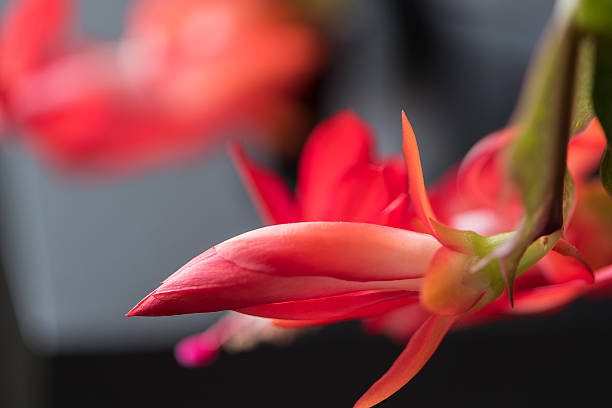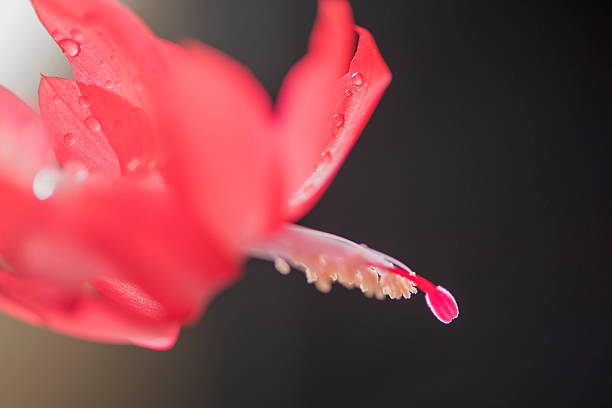
At [Your Website Name], we understand the importance of providing the best care for your zygocactus, also known as Thanksgiving cactus (Schlumbergera truncata syn. Zygocactus truncata). This beautiful plant, often sold as “Christmas cactus,” “Thanksgiving cactus,” or “holiday cactus,” adds a touch of natural elegance to any indoor space. To help you ensure the health and longevity of your zygocactus, we have compiled a detailed guide with essential care instructions. Follow these steps to create an optimal environment for your zygocactus to thrive and bloom.
Understanding the Zygocactus
The zygocactus, or Thanksgiving cactus, originates from tropical regions and typically blooms in late November, while its counterpart, the Christmas cactus (Schlumbergera x buckleyi), blooms around Christmas. Cultivars may have variations in their blooming times. These delightful plants produce vibrant purple, pink, or white blossoms in response to the cooler temperatures and shorter days of late fall.
The zygocactus is primarily grown as a houseplant, even though it is winter-hardy in USDA plant hardiness zones 10 to 12. With its small, flat green stem segments that have toothed edges, this cactus distinguishes itself from its spiky desert counterparts. The flower buds form at the tips of the topmost segments, creating a mesmerizing display when in full bloom.
Watering and Fertilizing

Proper watering and fertilization are crucial for the well-being of your zygocactus. During late summer, it is important to reduce watering frequency. Only water the plant when the top 1 inch of soil feels completely dry.
This helps simulate the drier conditions that trigger blooming. Avoid overwatering, as excessive moisture can lead to root rot and other problems.
Additionally, halt any fertilizer applications during this period. Resume fertilization after the flowering season ends, which is usually in late winter or early spring. Dilute 1/2 teaspoon of a balanced, soluble fertilizer (such as a 24-8-16 blend) in 1 gallon of water. Use this solution to irrigate the cactus every two weeks, ensuring the plant receives the necessary nutrients for healthy growth.
Light and Temperature Requirements
To induce optimal bloom and bud production, the zygocactus requires specific light and temperature conditions. Starting in mid-September, place the plant in an area that receives 13 hours of complete darkness each night. During the day, ensure it receives ample bright sunlight. This light and dark treatment encourages the cactus to enter the flowering stage.
In terms of temperature, maintain cool night temperatures between 55 and 65 degrees Fahrenheit. This temperature range plays a significant role in forcing the cactus to produce flower buds. By providing the appropriate light and temperature environment, you can enjoy a spectacular floral display during the holiday season.
Repotting and Sustaining Zygocactus

A. Soil Necessities for Nurturing Zygocactus
1. The Ideal Soil Composition:k
- The Zygocactus is a plant species that flourish in soil that has exceptional drainage capabilities, allowing surplus water to percolate through, hence averting circumstances that lead to waterlogging.
- It is recommended to select a potting mix specifically engineered for cacti and succulents. This specialized blend ensures the soil provides essential drainage and aeration, creating the perfect environment for your zygocactus to thrive.
2. Desired pH Balance:
- Zygocactus exhibits a preference for soil that is marginally acidic to neutral, favoring a pH scale range of 6.0 to 7.0.
- It’s crucial to monitor the soil’s pH level intermittently using a soil pH testing kit. This enables you to maintain the pH within the optimal range for the plant’s growth and health.
3. Soil Texture and Structure:
- A balanced soil mixture is paramount for the thriving of your Zygocactus. The soil should be a blend of organic materials such as peat moss or coconut coir, and inorganic constituents like perlite or coarse sand.
- This composite mixture encourages proper drainage, while simultaneously retaining sufficient moisture and essential nutrients for the roots of the plant.
B. The Art of Repotting

1. Timing is Key:
- It’s advised to repot your Zygocactus every three years subsequent to its flowering phase or when it appears to have outgrown its existing pot.
- The most opportune time to conduct repotting is during the spring season. This period coincides with the plant’s active growth phase, facilitating a quicker recovery post-repotting.
2. Pot Selection Guidelines:
- When choosing a new pot, select one that is a size larger than the previous pot. This will provide abundant space for the plant’s root system to expand and grow.
- A crucial aspect to consider is that the new pot should have a drainage hole. This feature is vital in preventing water accumulation at the bottom of the pot, which can potentially lead to root rot.
3. Steps for Successful Repotting:
a. Preparing the Potting Mix: Craft a well-drained soil blend by combining the cactus-specific potting mix with perlite or coarse sand.
b. Removal of the Zygocactus: Carefully extract the Zygocactus from its current pot. Be cautious to avoid causing any harm to the roots or stem segments.
c. Layering the New Pot: Line the bottom of the new pot with a layer of the freshly prepared potting mix.
d. Positioning the Zygocactus: Situate the Zygocactus in the center of the pot, ensuring it sits at the same depth as it did in its previous pot.
e. Filling the Pot: Fill the rest of the pot with the potting mix, gently compressing it around the plant to secure it in place.
f. Initial Watering: Hydrate the newly repotted Zygocactus lightly to settle the soil around the roots.
C. Maintenance Tips for the Post-Repotting Phase

1. Watering Guidelines:
- Post-repotting, water the Zygocactus lightly. This measure is taken to prevent overwatering, allowing the plant to acclimate to its new home.
- Once the plant has adjusted to its new pot, gradually resume your regular watering schedule.
2. Monitoring Soil
Moisture:
- Keep a vigilant check on the soil’s moisture content. An easy way to do this is by inserting your finger about an inch into the soil.
- When the soil at this depth feels dry, it’s time to water your Zygocactus. Ensure you provide just enough water to moisten the soil evenly, without creating a waterlogged condition.
A successful Zygocactus cultivation journey involves more than just the plant itself; the soil plays a vital role in the growth and health of the plant. Choosing the right soil type and maintaining the optimal pH level is crucial. Furthermore, ensuring the soil possesses good drainage characteristics is key to providing an optimal environment for your plant.
Maintaining the right soil texture, comprising both organic and inorganic materials, facilitates a healthy balance of moisture retention and nutrient supply for the plant’s root system. This balance ensures your plant has the necessary resources to thrive while avoiding detrimental waterlogged conditions.
The process of repotting, while it may seem daunting, is an essential step in the life of your Zygocactus. Timely repotting, combined with a careful selection of the new pot and meticulous potting steps, can ensure the plant’s smooth transition into its new home.
The time immediately following the repotting process is equally as important as the repotting itself. Adequate watering and consistent monitoring of soil moisture will help your Zygocactus adjust to its new environment and continue its growth journey successfully.
In essence, nurturing a Zygocactus requires a balance of several factors, including the right soil conditions, careful repotting, and diligent maintenance post-repotting. By providing these conditions, you’ll ensure the optimal environment for your Zygocactus to grow and flourish.
Expert Tips and Additional Information

Here are some additional tips and information to help you provide the best care for your zygocactus:
- Humidity: Zygocactus thrives in moderate humidity levels. To increase humidity around the plant, you can place a shallow tray filled with water near the pot. As the water evaporates, it creates a humid microclimate.
- Pruning: Prune your zygocactus after the blooming period to maintain its shape and encourage new growth. Use clean, sharp pruning shears to remove any dead or damaged segments.
- Propagation: If you want to expand your collection of zygocactus or share it with friends and family, you can propagate it easily. Simply take a healthy stem segment and place it in a well-draining potting mix. Keep the soil slightly moist until roots develop, and then treat it as you would a mature plant.
- Winter Care: During the winter months, when the heating system in your home can cause dry air, consider placing a humidifier near your zygocactus. This will help maintain adequate moisture levels and prevent the plant from drying out.
- Avoid Cold Drafts: While zygocactus can tolerate cool temperatures, it is important to keep it away from cold drafts. Sudden temperature drops can stress the plant and affect its overall health.
By following these care guidelines and incorporating them into your routine, you can provide an optimal environment for your zygocactus to thrive and dazzle you with its stunning blooms.
In Conclusion
Taking care of your zygocactus, or Thanksgiving cactus, is a rewarding and enjoyable experience. By understanding its specific needs for light, temperature, watering, and fertilization, you can create a thriving environment that encourages abundant blooms.
Regular maintenance, including repotting when necessary and addressing any pest or disease issues, will ensure the long-term health and beauty of your zygocactus. Embrace the joy of nurturing this delightful houseplant and relish the breathtaking floral display it brings to your home during the holiday season.





